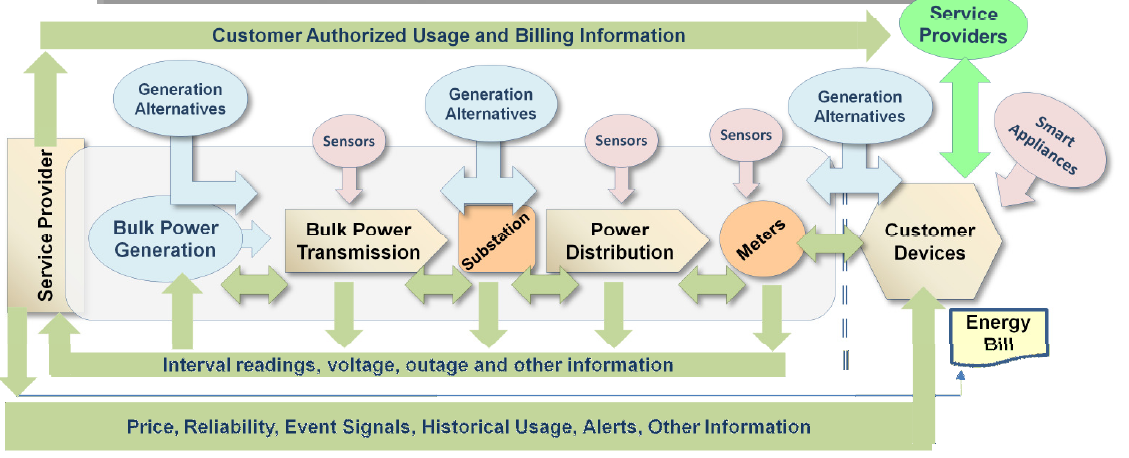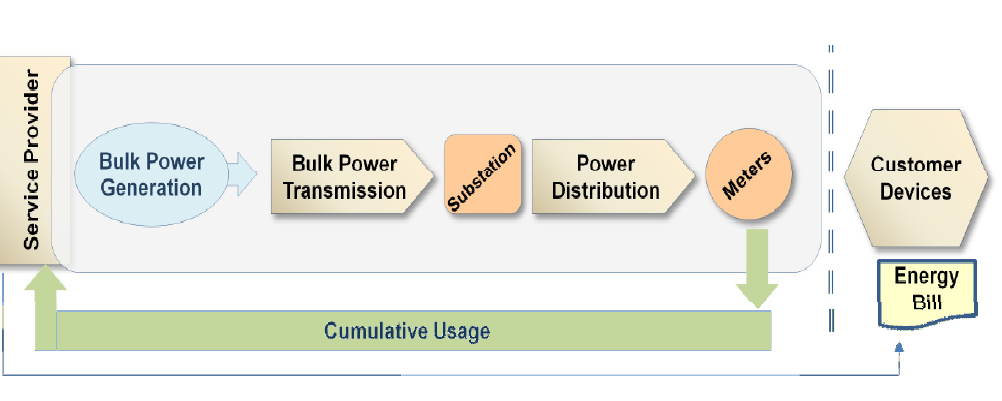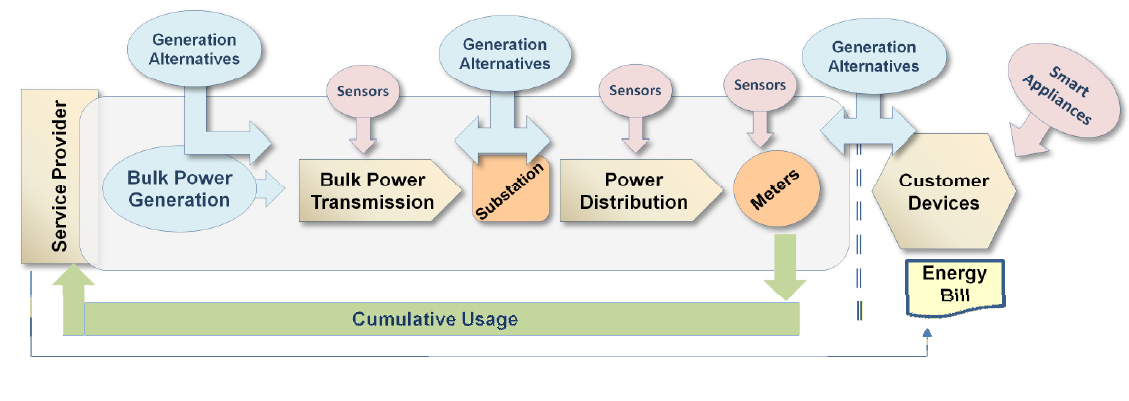Smart Grid is a common term nowadays, at least to Electrical Engineers. I am doing a small try to explain what Smart Grid is. So, i will not get into much Technical aspects. Thanks to my friend Priya K S who motivated me to write this post.
Smart Grid is a new concept for modern Electrical Grid which includes the Integration of Power Distribution system with Communication & Information Technology. Simply, we can say, Smart Grid is all about adding Intelligence & Flexibility to the grid in order to make it more reliable.
We will understand this once we go through the current electrical Grid system and how Smart Grid differs from it.
Current (Old) Electrical Grid System
As the above image, old Electrical Grid is a centralized system in which there is a single Power Generator and power is flowing in one direction; from Generator to Customer through Transmission & Distribution System. The metering is done at periodic intervals which is the cumulative usage for a particular period of time. The Power requirement is only a guess based on statistics and the generators are generating power based on this requirement . Sometimes the generated power may be excess or some times it may less. And this make huge overhead on the generating stations. The Transmissions loss due to long transmission is high.
Now we can see how we can transform existing Grid to Smart Grid. Simply speaking there are two steps.
1. Adding More Generators & Sensors
Smart Grid is a De-centralized system in which there are multiple Power Generators or Distributed Energy Resources (DER). Adding Generators throughout the grid allows power sources to be located near to the customer. It also helps to reduce the probability for blackouts. Due to this option, the customer can use renewable energy resources and the customer can sell power when he doesn’t use it.
Complete monitoring and control of the entire Grid can be possible by adding different sensors and control equipments to the grid. For Example, addition of sensors will help to immediately identify when some Transmission Line breaks Or, Power Theft can be easily identified if there are enough sensors and real time monitoring systems.
Smart appliances are appliances with intelligence. The primary goal of making appliances Smarter is to improve the efficient working at less power consumption and at low power cost. For Example, If you have a smart fridge, it will not work (or limit the working) in peak hours in order reduce the peak load as well as to reduce your energy bill (nowadays, energy costs more during peak hours).
2. Adding Communication & Information Technology

Addition of Communicating System and Information Technology supports the information from all points to be completely interlinked; with the Utility or Service provider, the Customer, Transmission & Distribution stations etc.
Generating stations will get the near real time power requirements. Sensors are integrated with power flow controlling equipments and are continuously updating service providers with performance data of the grid.
The metering data such as instantaneous power cost will be available at customer end and the Smart Appliances can act depends upon these data. And the instantaneous usage of each customer will be available to the nearest Billing station. There will be option for customer to check their power usage history.
Some Advantages of Smart Grid are;
- Safety: For example, If an Power line break, the sensors immediately identify it and break the electrical power supply and there by avoids accidents.
- Energy Savings: Losses due to long distance transmission of power can be reduced due to the option for Distributed Energy Resources. Since appliances are also smart, they will also save energy.
- Economic: Smart Appliances and Option to sell Customer generated power will make power more economic.
- Greener: Since There is option for renewable energy sources, the nuclear and thermal power generation can be reduced and thereby reducing CO2 emissions and nuclear radiations.
- Ease of entire Management: The service provider can easily manage power distribution, billing, maintenance etc since all the necessary data will be available at a central point.
- Reliability: Due to decentralized power generation, even if one generator got wrong, power supply will not get affected.
Thats all for now. Hope you got the basic concept of smart grid. I will try to explain more details of Smart Grid in the future posts. Feel free to comment if you have any queries or suggestions.
Reference:
‘An Introduction – Smart Grid 101’ from Lawrence Berkeley National Laboratory.
Thank You.


weldone my brooo….its very useful topic….